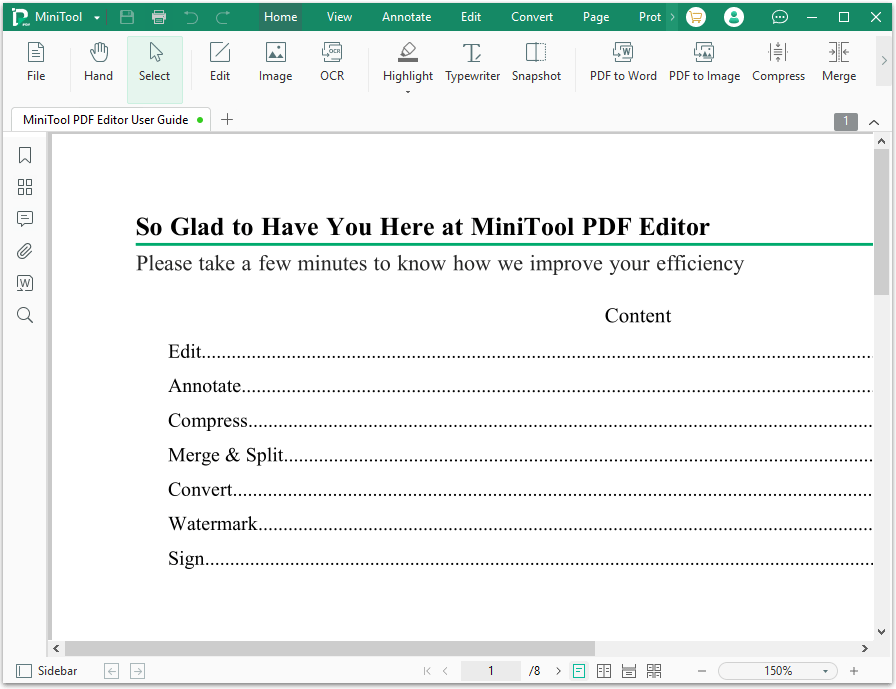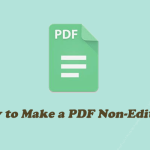PDF is widely used in our daily life. They are easy to download and share over the Internet. However, intrusive malware is always looking for an opportunity to damage your computer. Everything you download from the web can contain viruses. So, can a PDF have a virus?
Can PDFs Have Viruses
Can PDFs have viruses? The answer is Yes, and not all PDFs are secure. Being one of the most popular file types, PDF documents are favored by hackers to compromise your device. They use malicious PDFs to steal, encrypt and delete all your saved data. Once a virus-laden PDF file is downloaded and opened, PDF malware will quickly start and cause huge damage.
Well, where do PDF viruses be attached to? There are three elements where PDF viruses are hidden:
JavaScript
PDFs may contain viruses in JavaScript. It is a programming language commonly used to create dynamic web page behavior. JavaScript code can easily be manipulated by hackers to execute malicious commands. PDFs also use JavaScript to add dynamic details such as fillable forms, which is why they can contain PDF viruses.
Multimedia Content
Audio or video content embedded in PDFs can be corrupted and injected with PDF viruses. This PDF malware is very difficult to detect without a professional PDF malware scanner.
Hyperlink
PDF viruses can hide in hyperlinks in PDFs. Users love to add hyperlinks in PDFs to refer to the information they want. However, these links may lead you to unsafe websites and trick you into providing your personal information.
How to Check If PDFs Have Viruses
Many PDF elements may contain viruses. So how do you know if a PDF is safe? The most straightforward way to check your PDFs for viruses is to scan your PDFs for potential viruses.
- Use built-in antivirus software: Many operating systems, such as Windows and Mac, have antivirus software built in by default. You can enable the software to check your PDFs for viruses.
- Use a professional PDF virus scanner: If you find that the built-in antivirus scanner isn't enough, try a professional malware scanning tool like PDF Scanner.
How to Protect Your Device from PDF Viruses
While there is no foolproof way to protect you from all PDFs with viruses, here are some things you can do to reduce potential threats.
1. Stay away from unsafe websites and emails: Do not interact with suspicious websites or untrustworthy links you receive. If you are not sure whether these PDFs contain viruses, please do not touch them.
2. Keep antivirus software up to date: Outdated antivirus software is not enough to detect malicious PDFs, and viruses in PDFs change in real time.
3. Use a professional PDF malware scanner: Professional PDF Virus Scanner precisely scans your PDFs for malware and protects your device from attacks.
4. Disable JavaScript when reading PDFs: This is a good practice against PDF viruses when opening PDFs. For Adobe Acrobat users, click Edit > Preferences > JavaScript. Then disable it.
5. Use a safe PDF reader: A safe PDF reader like MiniTool PDF Editor can keep you safe. It is an easy-to-use and reliable program that is embedded with almost all the functions you need to manage a PDF file.
MiniTool PDF EditorClick to Download100%Clean & Safe

![How to Password Protect a PDF Safely? [A Step-by-Step Guide]](https://images.minitool.com/pdf.minitool.com/images/uploads/2023/03/how-to-password-protect-a-pdf-thumbnail-150x150.png)

![PPT to PDF: How to Convert PPT to PDF with Ease [Ultimate Guide]](https://images.minitool.com/pdf.minitool.com/images/uploads/2023/04/ppt-to-pdf-thumbnail-150x150.png)